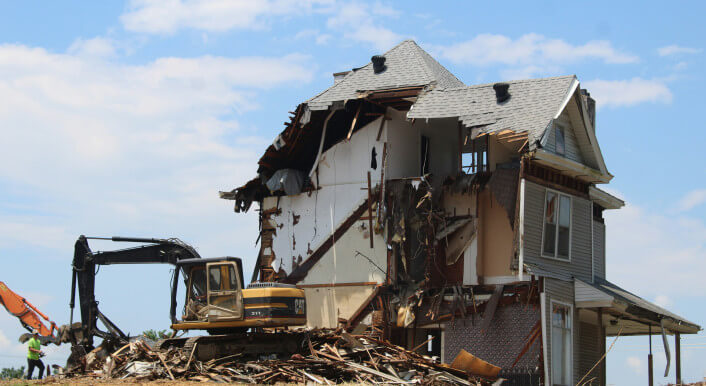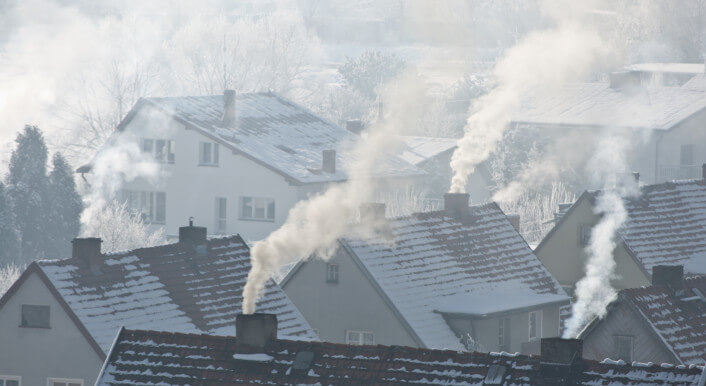Demolition Atlas Europe launched: CORRECTIV investigates demolitions across Europe
Every year, hundreds of thousands of buildings are demolished across Europe. In cooperation with international media, we uncover the ecological, social and cultural consequences.

CORRECTIV.Europe is launching a new investigative project, the Demolition Atlas Europe. In cooperation with international media, we intend to shed light on the demolition of buildings – a virtually unregulated mass phenomenon that to date has received too little attention, despite the many problems it causes:
- More than a third of all waste in the EU is generated by the construction industry and building demolitions. At the same time, the building sector consumes half of all raw materials.
- Demolition and new builds, especially concrete and steel production, is very energy-intensive and directly contributes to the climate crisis.
- New builds often come with significantly higher rents. This trend accelerates gentrification processes and hinders sustainable urban development.
- A piece of history is lost with every demolished building. In some cases, even listed heritage buildings are demolished.
- There are alternatives to demolitions: studies show that refurbishing existing buildings to make them more energy efficient is often more sustainable and resource-efficient than building new ones.
In Germany, the Federal Statistical Office reported 12,600 demolished buildings in 2022, resulting in the loss of 16,500 living units. The exact locations and the reasons for the demolitions remain unclear. Most demolitions do not require official authorisation. The environmental NGO Deutsche Umwelthilfe, one of the organisations supporting the German version of the Demolition Atlas, estimates that the number of unreported cases is much higher than official figures suggest.
According to civil engineer Jens Otto, Professor of Construction Management at the Technical University of Dresden, the informational value of the official demolition statistics is indeed limited. In spring, he published a study analysing the official data on the demolition of buildings in all German federal states. The data is only comparable to a limited extent and is even incomplete in some cases, Otto says. “The official data does not adequately reflect the scale of the demolition phenomenon, and the potential of the extensive data collection remains untapped.” Other researchers also criticise the lack of precise and – above all – local figures on building demolitions in most European countries.
We intend to close this gap and make visible for the first time the sheer scale of the mass phenomenon of demolitions. With the help of CORRECTIV.Europe’s Demolition Atlas Europe, a constantly growing Europe-wide database is now being created. The Demolition Atlas Europe is based on CORRECTIV’s in-house tool, the CrowdNewsroom: using an interactive map, citizens can enter buildings that are at risk of demolition or have recently been demolished.
The Demolition Atlas Europe will initially be launched in collaboration with the investigative newsroom of Greek online magazine SOLOMON, supported by JournalismFund Europe. Demolition Atlas Europe is modelled on the Demolition Atlases that CORRECTIV has already established in Switzerland and Germany over the past two years. CORRECTIV.Europe now wants to work with other editorial teams to increase the visibility of the topic throughout Europe.
“Every investor faces the decision: demolition or renovation?” says civil engineer Otto. “Generally, demolishing and rebuilding is more lucrative.” According to Otto, existing buildings often do not align with contemporary ideas of modern architecture, offer too little usable space in relation to the very expensive property value and do not harness the potential of new materials and forms of construction. From an ecological perspective, however, Otto says the answer is clear: “We can no longer afford to demolish.”
“Demolition and new builds generate huge amounts of waste and CO2. Non-renewable resources and grey energy tied up in all that steel, screed, masonry and concrete are being wasted,” says Otto. “This is a global problem.” According to Otto, a sustainable transformation of the construction industry can only be achieved by making use of existing buildings for as long as possible. “Preserving existing buildings is the highest form of sustainability. A new building, no matter how environmentally friendly, cannot compete with that,” says Otto. “Renovation and preservation of existing buildings is the order of the day.”
Demolition Atlas Europe is developed with the support of Journalismfund Europe.



